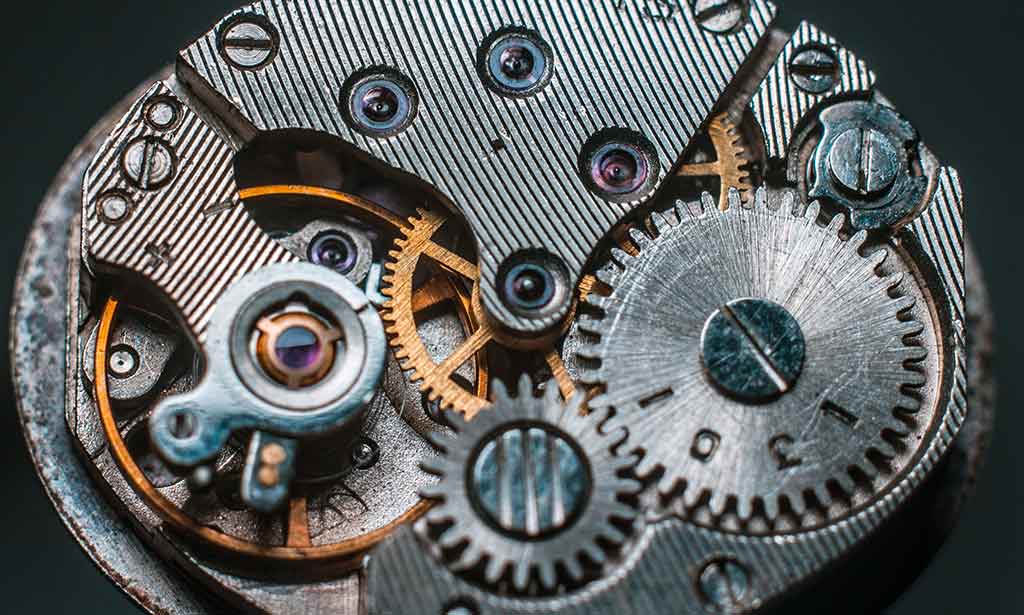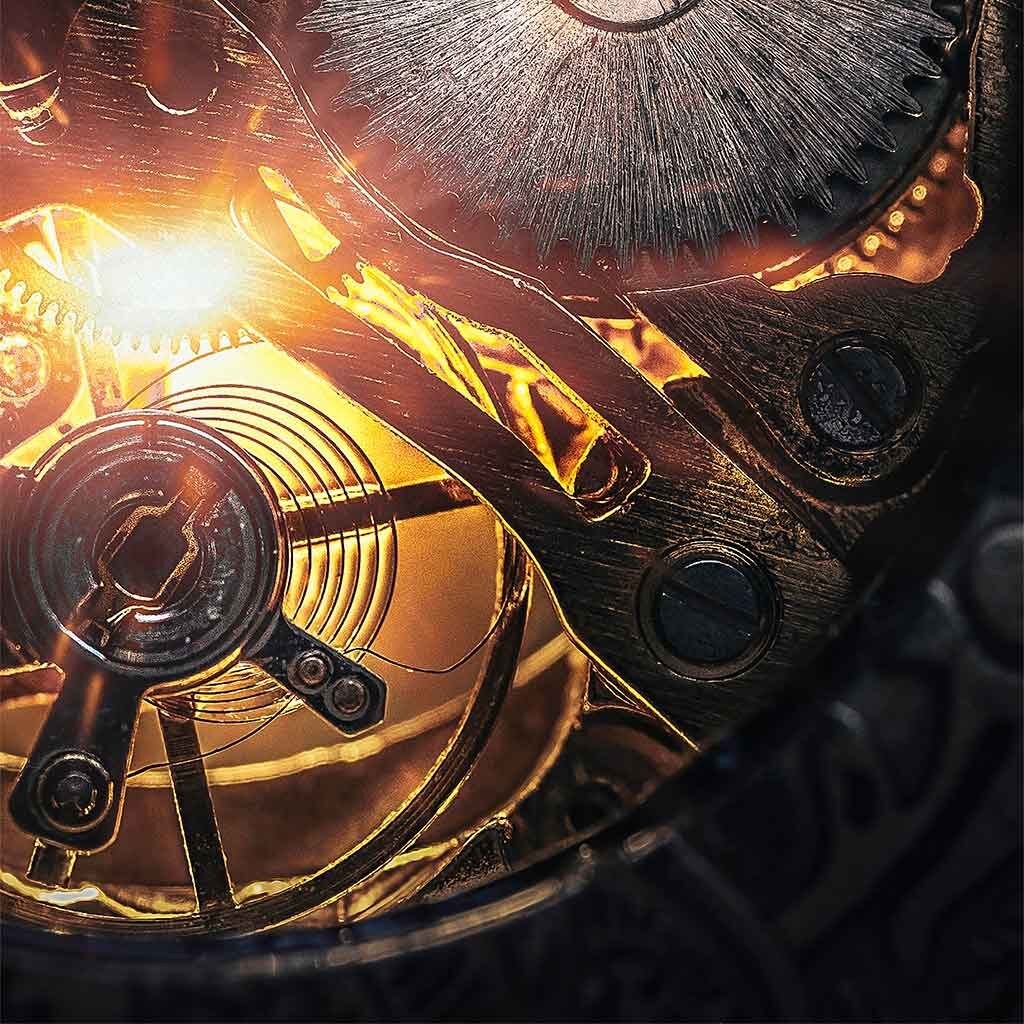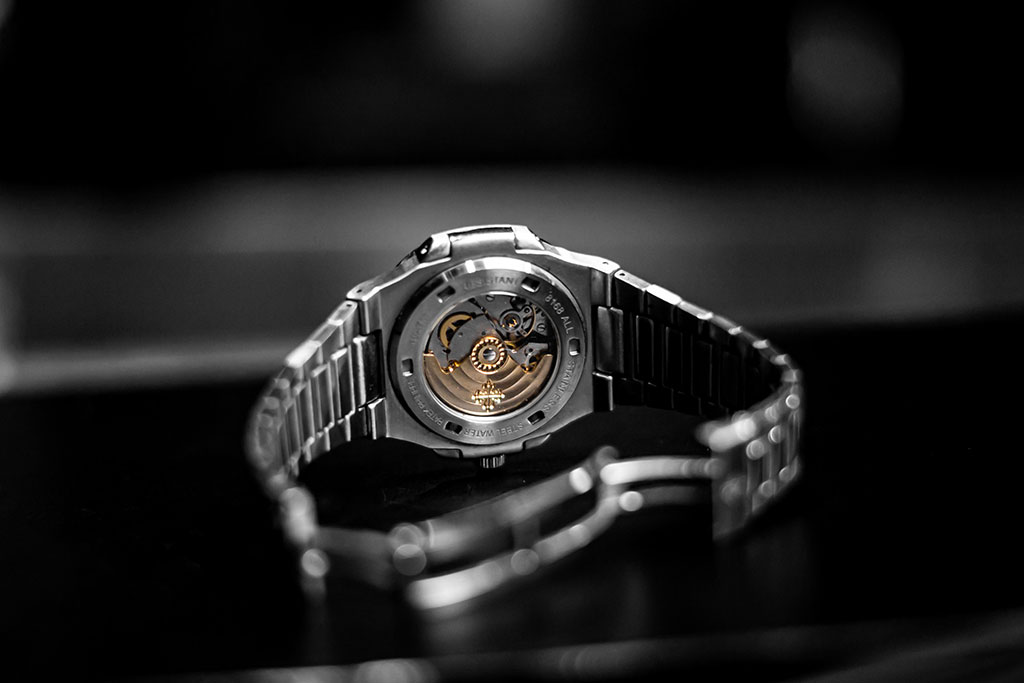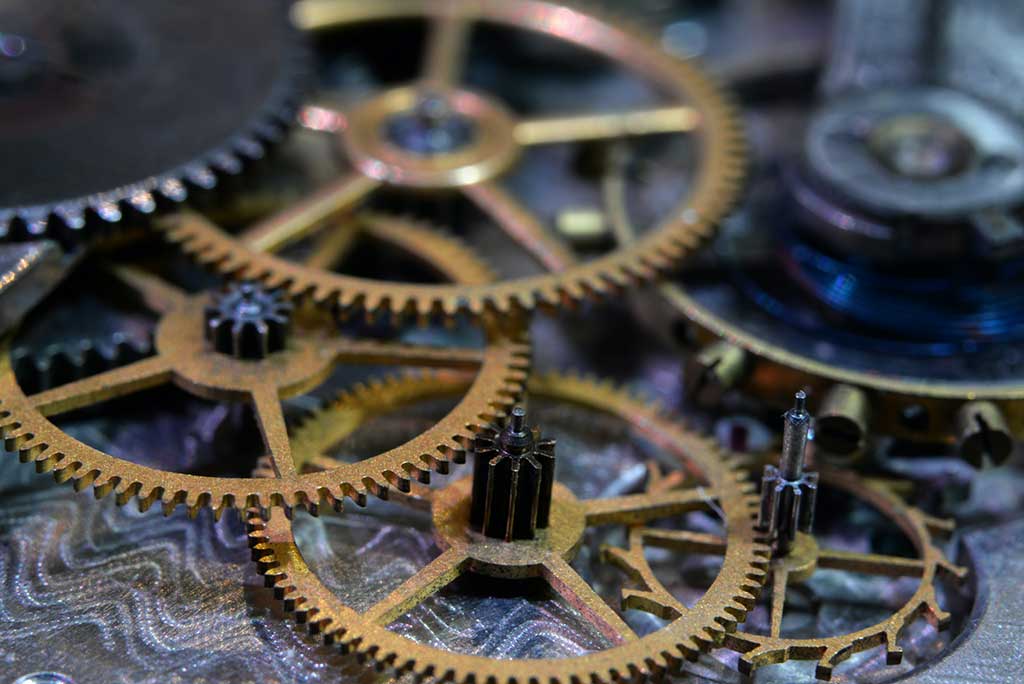Many people, probably including yourself, cherish their luxury watches. But have you ever wondered what powers it? Where does it get the energy for those tiny movements? How does it help you schedule your day?
The answer is straightforward; watch movement. Also known as calibers, this is the fuel that helps your watch. It’s the internal mechanism that creates movements for the watch’s hands.
In case you have ever wondered how calendars, dual time zones, and chronographs work, well, you have your answer. It’s those tiny watch movements within the mechanism that cause all that.
However, there are different watches out there. Some are straightforward as they are powered by electrical energy, and others are not so straightforward. A good example is an automatic watch.
In this guide, we will be answering the question, what’s an automatic watch? We will also see the difference between automatic and mechanical/quartz watches.

History of automatic watches
Abraham-Louis Perrelet is believed to be the father of automatic watches. He created the first in the 1770s, which transformed the movement of a wearer’s wrists into energy. In this case, the power could last for up to 8 hours.
However, it was not until 1778, when French inventor Hubert Sarton created another design, that they became famous. People started buying and wearing automatic watches in 1780. They weren’t always the popular and expensive pieces we know today.
Instead, they used to be pocket watches designed by Abraham-Louis Brequet. He had borrowed the idea from Perrelet’s designs and only sought to improve on it.
Unfortunately, they were not very reliable. And hence, European buyers stopped using them. But that did not end as technological advancement after WWI brought in new ideas.
Pocket watches lost their favour with wearers after the war. Wristwatches then took over. And automatic watches were the first of this type. They now relied on energy from the wearer’s wrist instead of their pockets. Hence, they become more accurate and more reliable.
Understanding Watch Movement
Every watch manufacturer seeks to create something different. And that’s why there are so many types of watch movements out there. Most of them often use propriety mechanisms.
Watch movements can be placed into two main categories. There are mechanical and there are quartz movements.
So, how does one determine if their watch uses either of these movements? The simplest way is to look at how the second-hand moves. In a quartz piece, this movement is displayed in a tick-tick manner. That means the second-hand moves once/sec.
In mechanical watches, the second-hand moves in a fluid. It sweeps fashion as the seconds glide by.
You will need a battery to power both quartz and auto-quartz watches. They come with an electrical system that would otherwise not work without the batteries.
Mechanical watches are subdivided further into manual and automatic mechanisms. As you may already know, mechanical calibers are made from tiny gears and springs that help them run smoothly. It takes more time and skills to create these pieces. And that’s why they are more expensive than battery-powered ones.
A watch that uses batteries may be more accurate, but automatic and manual watches are a better choice for many. They are unique pieces that represent hundreds of years of craftsmanship and innovations. It’s ingenious how these watches are designed.
An automatic movement is also called “self-winding. That is because they don’t need any source of power. Instead, they rely on the motion of the wearer’s wrists.
These watches are more comfortable to wear. They are easy to use and even easier to care for. If you wear the watch every day, you will not need to wind it down manually to keep it operating.

How an Automatic Watch Works
Unlike electrical watches, automatic watches rely on the movement of a rotor or a metal weight. The rotor oscillates freely inside the watch, causing it to operate. This is what makes the hands move.
Every person moves their hands when in motion. So, as your wrist moves, the rotor spins. That spinning is transformed into energy that winds the watch automatically from the mainspring. The energy is stored and transferred from the mainspring.
Do you still need to wind an automatic watch? This is one of the biggest questions enthusiasts ask. Well, you might have to wind them in some situations.
If you wear the watch regularly, you may never have to wind them. They operated automatically. But winding it will be necessary if you don’t use it often.
Note that automatic watches are given this name because they have hundreds of tiny parts that work automatically. It requires a long time to discuss each part and what it does. For now, we will stick to just understanding what automatic watches are all about.
Main components of an automatic watch
To understand better how automatic watch movement works, we have to consider its main parts. The watches have many tiny components. But we will not discuss it all here. Instead, we will focus only on those you should know about.

Mainspring
As seen above, the mainspring is the power source for an automatic watch. When you wind the crown, it transfers kinetic energy into the coil of this spring, which becomes the storage unit. The mainspring lightens as it receives more power.
Crown
There is a small wheel on the other side of the watch. This is called a crown. It winds the watch as it turns, enabling it to operate well.
Gear train
Every machine that moves requires gears. The same is true with automatic watches. It’s the gear train that allows energy from the mainstream to flow and move the watch’s hands. This part comprises a small series of internal gears that work together for the watch to function.
Escapement
Another crucial part of automatic watches is the escapement. This part is like the timepiece’s braking system. The energy from the mainspring is dispersed into equal parts, which forms the escapement.
Balance wheel
The work of any wheel is to spin. And it’s no different from the one in automatic watches. It’s an internal part that beats five to ten times every second in a circular movement.
Dial train
The component is made up of tiny gears. It distributes the energy from the balance wheel equally to the watch’s hand. It keeps the hands moving.
Jewels
These are pieces of synthetic rubies placed at the center of the gear. They keep the machines in continuous motion. They also prevent wear and tear created by friction. Consider them as the bearings in these timepieces.
Rotor
This is the metal weight inside the mechanism that appears like a semi-circle. It’s attached to the movement and swings freely as the wearer moves their wrist. Thus, the rotor moves if the wearer is moving their wrist. It then transfers and twists power in the mainspring for storage. It comes with a clutch that prevents the mainspring from winding further after a certain angle.

The Difference between Automatic Watches and Mechanical Watches
Mechanical watches are hand-wound. They employ complex movements comprising hundreds of small parts, working together for the timepiece to move.
Most mechanical watches are in-house produced in Sweden. Their quality makes them quite expensive too. But you can also find cheaper ones from companies like ETA.
The self-winding watches have a rotor that assures constant movement of the watch’s parts when the wrist moves. The rotor also tightens the spring as it spins and winds until a clutch is engaged to prevent further winding.
A hand-wound does not have a rotor. Therefore, a wearer must use their hands to wind it. And that’s why it’s called mechanical.
Other differences are in:
Design and manufacturing
Many people buy automatic watches because they are more convenient. All you have to do is put on the watch, and you are good to go. You never have to worry about winding them manually every day.
Because of this, you will find more automatic watches on the market than hand-wound ones. And even though they are generally more expensive, most buyers will go for them without hesitation.
Working mechanism
The automatic watch features a weighted rotor. This is the component that moves the hand. There are several advantages and disadvantages to this feature.
A weighted rotor means the watch will be generally heavier and thicker. While this main not be an issue for many people, it’s still worth mentioning.
Also, it obscures a portion of the movement. Those who like watching this motion will not find it very amusing.

Difference between Automatic and Quartz Watches
You will always meet these options. Quartz watches are even more popular because they are cheaper and don’t require serious maintenance.
Here are the main differences:
Movement
A quartz watch uses battery power. It’s designed with a stepping motor and quartz crystals inside an electronic circuit. These components control the watch’s accuracy of time.
Power from the electric field is transformed into mechanical energy at a regulated pace. The train wheel distributes this power equally. And you can tell the difference between automatic watches because of the ticking sound and how the hand moves.
Automatic watches are mechanical. They rely on a rotor, which is primary in their operation. It does not have a battery or an electrical circuit like quartz watches. The rotor moves when the wearer moves their wrist.
Quartz watches use quartz oscillators. Automatic watches use harmonic oscillators. Hence, you may find significant differences in time accuracy.
Winding mechanism
It’s the winding mechanism that sets these two options apart naturally. Automatic movement requires a rotor for automatic winding. The energy is stored in the mainspring and will keep the watch working even when the wearer is not in motion.
Maintenance
Maintenance is a crucial aspect of every valuable item. Hence, you need to keep your watch well if you want it to last. You must know how to take care of your timepiece.
A quartz watch requires a battery. You may have to change it from time to time. The same is not necessary for a self-winding watch. They tend to stay in good condition for a very long time.
Accuracy
Watches are not different from other timekeeping devices. They cannot be 100% perfect. Nevertheless, it’s essential to look at the accuracy and precision of the piece you buy.
In most cases, quartz watches offer more accuracy. Since they don’t require the wearer to move, their operation is more automatic.
Cost
Automatic timepieces are generally more expensive. This is because they require complex parts to perform. Quartz crystals are in abundance.
A lot of complexity and precision goes into engineering automatic watches. Hence, its value must be equated to its price. However, some automatic watches are much more accessible.
How to Measure the Quality of an Automatic Watch
It’s no secret that automatic watches have come a long way. They are wonderful pieces of art that have stood the test of time.
However, not all of them are good. Hence, it is crucial to consider factors that make such a watch worth buying. It has to match the gold tag.
Here are the metrics you can use:
Accuracy
The accuracy of any watch varies as per the user. Some want their timepieces to be extremely accurate. For instance, you are a professional driver; you don’t want to miss a second in your timing. Those who care about style more will not mind a few seconds off.
Get a watch that can gain or lose only about 25 seconds. Such is a piece that will always keep you on time.
Beats or Ticks per hour
Watchmakers use terms like beats per second or Hz. Most watches will have 6, 8, or 10 beats/second. They are measured as 21,600, 28,800, or 36,000 BPH. Go for a higher beat to get a faster ticking. They are more accurate.
Power reserve
An excellent automatic watch should last at least 42 hours on stored energy when fully wound. So, several days of power should give you a better performance.
Reliability
Automatic watches are generally more reliable. They are manufactured with precision and accuracy. However, certain features can make a piece more reliable. A good example has a higher BPH.
